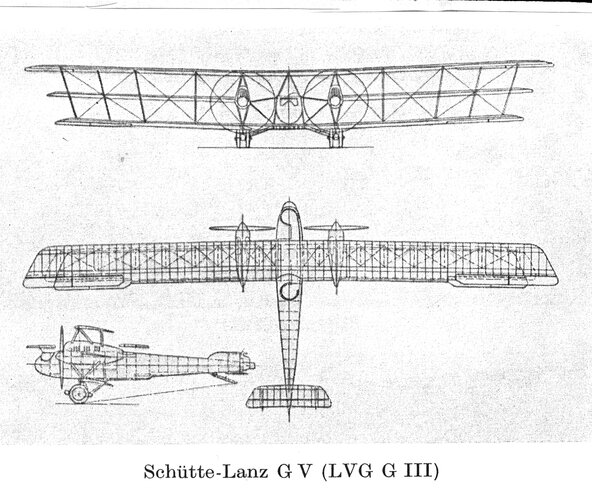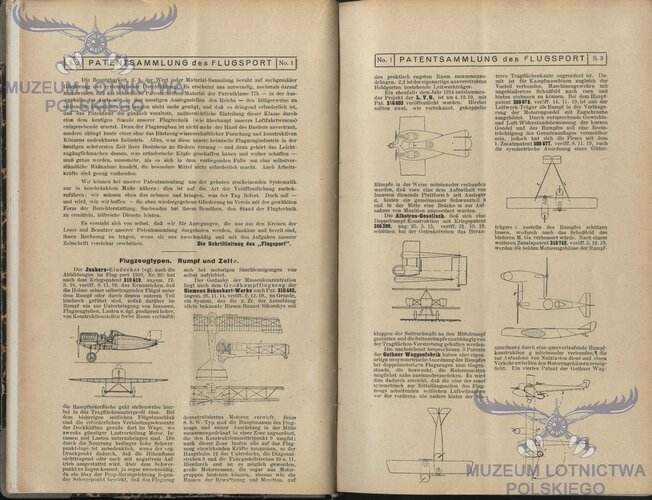You are using an out of date browser. It may not display this or other websites correctly.
You should upgrade or use an alternative browser.
You should upgrade or use an alternative browser.
German WW1 Bomber projects
- Joined
- 9 October 2009
- Messages
- 21,973
- Reaction score
- 13,631
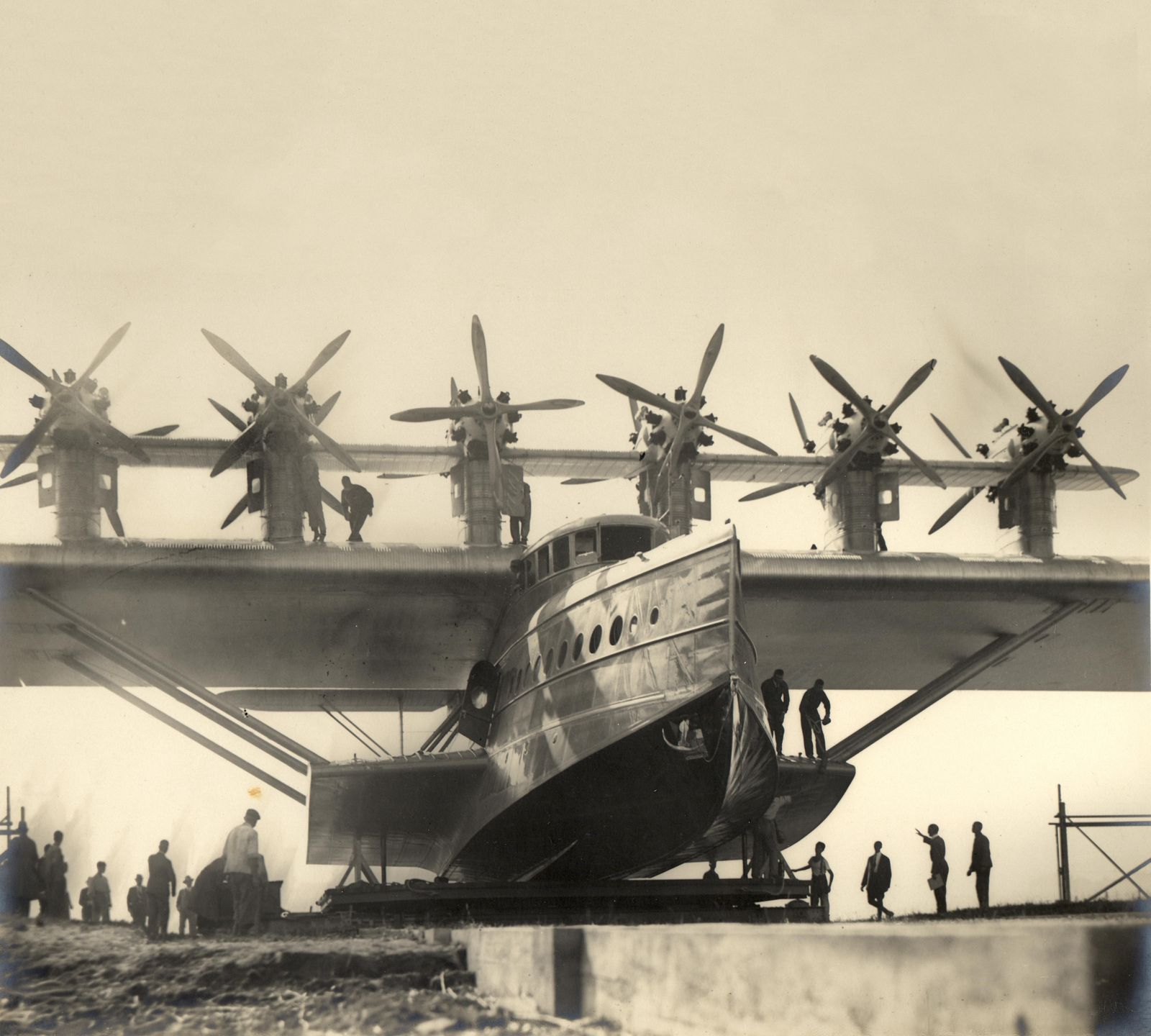
When Giant Airplanes Ruled the Sky
The Great War triggered a trend toward big flying machines. Really big.
The father of the flying giants was the Russian genius, Igor Sikorsky, who in 1913, successfully invented the multi-engine heavy lifter. (He would later invent the world’s first practical helicopter.) His four-engine “Grand” first flew in 1913, immediately attracting the attention of the czarist military (and the czar himself). Piloting his improved “Ilya Murometz” (named for a knight in a Russian legend), Sikorsky took eight passengers up to 3,000 feet in January 1914 for a two-hour aerial tour of St. Petersburg. The passenger saloon had wicker furniture, a toilet, wind-generated electric lighting, and heating from an exhaust pipe routed through the cabin. The Russian air service was ordering Murometz bombers even before the outbreak of war in August 1914. The appearance of the Sikorsky giants in 1915 over the Eastern Front threw the Germans into a panic.
The German response was the “Riesenflugzeug” (R-plane) development program. Berlin was suddenly willing to bankroll almost any contractor who had any idea for a very large airplane. In their authoritative history The German Giants, G.W. Haddow and Peter M. Grosz documented at least 37 giant R-plane (including pre-R-plane and R-seaplane) projects between 1915 and 1918. Of course, the German approach to profligate military spending came with stiff requirements for speed, altitude, bomb load, compact crew space, dual pilot controls, powerful self-starting engines that could be repaired in flight, defensive machine gun positions, and bomb bays or racks accessible to the crew. By 1917, R-plane specs included a wireless station and vibration-protected instrumentation.
The result was an explosion of aeronautical ingenuity, some of it brilliant, some of it sketchy. Some giants had their engines clustered inside the fuselage, delivering power to outrigger propellers through transmission shafts. Others had their engines mounted directly on, between, or even above their wings. Some engines were mounted back to front in a push-pull tandem with the mechanic riding in the nacelle in between. Still other designs were distinguished by open frames between major components, connected by terrifying catwalks and ladders.
Some German giants landed tail first with big skids on the prow to prevent nose-overs. Others landed on tricycle nose gear but with belt-and-suspenders tail skids. They landed on water on floats or as true hydroplanes with integral boat hulls. They were monoplanes, biplanes, triplanes, and sesquiplanes—a biplane wherein one wing has less than half the area of the other wing.
Late in the war, the Fokker company submitted a preliminary design for an all-metal monoplane with wing roots so thick that the mechanics reached the outboard engines from inside the fuselage.
The oddest R-plane was the Linke-Hofmann R.II. The builders took a proven single-engine biplane design and blew it up to three times original size. On the ground, the Linke-Hofmann appeared as an elaborate optical illusion. “It is quite impossible to grasp the immense size of the R.II just from photographs,” observed Haddow and Grosz. “The single air screw, the pilots’ cockpit, the gun mounts, and the conventional landing gear all trick the eye.” Only by mentally inserting a man alongside its five-foot-high wheels or its 23-foot-diameter propeller—“the largest single propeller ever built”—could you grasp the airplane’s mammoth scale, they said.
The Linke-Hofmann was 66 feet long and 23 feet high. Packed into its long nose were four Mercedes 250-horsepower engines coupled in pairs to a single propeller shaft. The gear tires were steel. It never flew in combat, but it apparently handled well in the air and on the ground. In a January 1919 post-Armistice test flight, a Linke-Hofmann ran off the end of the runway and plowed 79 feet through an ice-crusted snowfield without tipping over. The wheels left ruts 12 inches deep.
The most combat-effective R-plane was the Zeppelin-Staaken R.VI, which served on both the Eastern and Western fronts, including the raids on London. All the German giants were surprisingly tough. Of the 17 R-planes of all types lost in combat operations, only three were destroyed by enemy action, and only one was ever shot down by another aircraft. But giants on both sides of the conflict were vulnerable to bad weather, mechanical failure, and overwhelmed pilots.
The finest R-planes were the work of Claude Dornier. The series of giant R-seaplanes Dornier developed for the German navy (Rs.I through IV) were so advanced they could have flown in from another planet—specifically, Planet Zeppelin. Dornier was a protégé of Ferdinand Graf von Zeppelin, creator of the rigid airships that revolutionized aviation even before the Wright brothers.
In 1914, Zeppelin set up Dornier near the Zeppelin airship plant on Lake Constance in southern Germany. Dornier’s brief was to build the navy’s giant R-seaplanes completely in metal, using the many construction innovations developed for the Zeppelin airships, according to Jürgen Bleibler of the Zeppelin Museum in Friedrichshafen. For his seaplanes, Dornier drew on Zeppelin work with aluminum alloys, braces, and triangular girders to add strength and rigidity while holding down weight.
Still, the exotic materials of the time posed problems. Duralumin sheet metal had a tendency to exfoliate like the pages of a book or turn to white powder. “There were still hard technological problems with the new aluminum alloys,” Bleibler explains. “Therefore the Rs.I was a mixed steel-aluminum construction. Regardless of its failure, Rs.I structurally was years ahead of its time.” But other elements of the Rs.I—its engines, its propeller drive shafts, its instability on the water—were fully of its time. It never flew.
The Rs.II was technically a sesquiplane with a broad, wide top wing and a stubby half wing attached to the hull. Dornier always worked in close consultation with his engineers to refine or completely redesign as shortcomings emerged and the work progressed. The Rs.II’s rear fuselage began as a wire-braced box and then became a much simpler open tubular boom. The engines were moved from inside the hull to tractor-pusher pylons, which became a Dornier trademark.
For the Rs.III, Dornier shook up the components into a triple-decker sandwich—a monoplane wing and fuselage on top, engine pylons in the middle, and the cockpit in a wide hull on the bottom. It was a practical and durable aircraft. Dornier delivered an Rs.III to an Imperial Navy seaplane base on the North Sea in February 1918. It served for three years, continuing to clear naval minefields after the war’s end, before it was ordered destroyed by the Allied post-war disarmament commission.
The same commission also destroyed Dornier’s wartime masterpiece, the Rs.IV, an all-metal monoplane of true monocoque stressed-aluminum construction. The small lower “wing” on the hull had become a “sponson,” a stubby winglet projecting from the hull, which allowed Dornier to increase the seaplane’s stability in the water without widening it to grotesque proportions. This Dornier-patented feature gave the craft a quicker exit from the water at takeoff.
- Joined
- 9 October 2009
- Messages
- 21,973
- Reaction score
- 13,631
- Joined
- 26 May 2006
- Messages
- 34,901
- Reaction score
- 15,761
Regarding the LVG G.III Grossflugzeug:
Via my dear Richard.
Attachments
- Joined
- 26 May 2006
- Messages
- 34,901
- Reaction score
- 15,761
Some more German WW1 asymmetricals from Gotha attached.
See 'Gotha Go. VI' at: http://www.geocities.com/asymmetrics/go6.htm
Also from Flugsport 1920.
Attachments
World B4
my bad y'all
- Joined
- 25 June 2017
- Messages
- 448
- Reaction score
- 364
Do you know how much information, of any, the Allied commission found about these gliders after the war? Or did the photos and info surface a different way?In the "Illustrierte Enzyklopädie der Raketen u.Lenkwaffen" by Bill Gunston, I've found these photos
of SSW mono- and biplane types. They were mainly intended for use from airships. Another "low
silhouette" monoplane was uder development at bthe end of war. Ground clearance of the R.IV
was too low, but use from the R.VIII would have been possible, is told in the afore mentioned
book.
Airborne2001
ACCESS: Secret
- Joined
- 19 June 2020
- Messages
- 224
- Reaction score
- 278
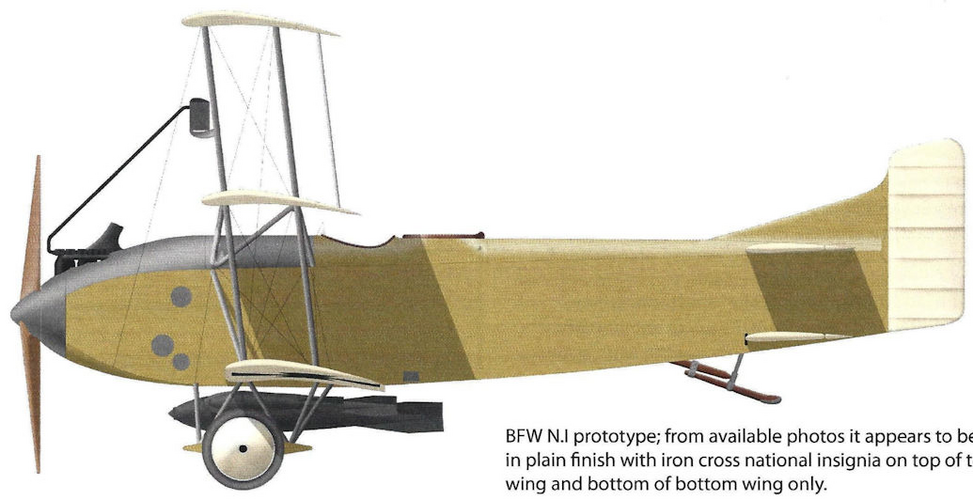
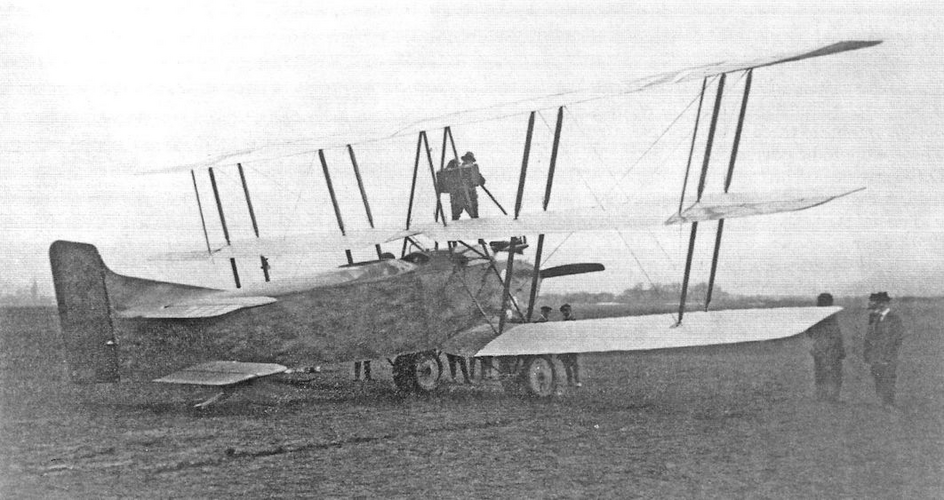
The BFW N.I was a single engine triplane night bomber. The "N" class applied to single engine night bombers. Rather than making the wings longer like other designs of this class (like the more well known AEG N.I), BFW decided to make their design a triplane aircraft to increase the loaded weight. While this allowed for a high payload, it did cause the aircraft to be very slow. The BFW N.I was therefore not selected for production.
- Joined
- 11 March 2006
- Messages
- 8,625
- Reaction score
- 3,805
That's actually a Schütte-Lanz design, the R.I bomber project from 1918, so Wilhem Hillmann may well
have had his hand in it.
https://www.secretprojects.co.uk/threads/german-ww1-bomber-projects.7594/post-428486
have had his hand in it.
https://www.secretprojects.co.uk/threads/german-ww1-bomber-projects.7594/post-428486
Similar threads
-
-
-
Experimental ww1 fighters from Albatros and Siemens
- Started by T-50
- Replies: 12
-
German WW1 Fighters and Recce Aircraft Prototypes and Projects
- Started by hesham
- Replies: 314
-
Friedrichshafen Little Known Prototypes & Projects
- Started by hesham
- Replies: 16

